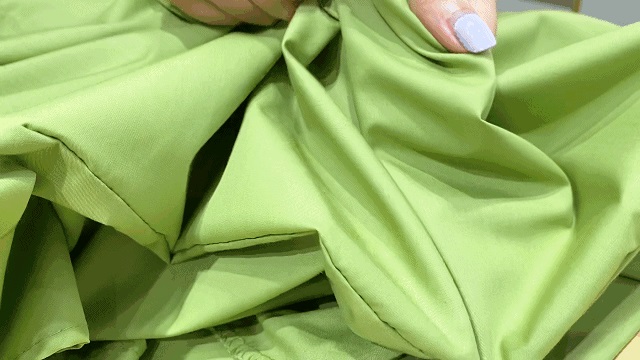Product Introduction - Hydrophilic Silicone Oil 6660-C
This product is a finishing agent with low yellowing, color changing, and extremely smooth and soft hand feel. After finishing, the fabric has a good skin feel and the comfort of wearing is greatly improved. It also has good hydrophilic properties, with a water absorption time of 3-5 seconds for handling cotton fabrics.
Packaging and Storage: 125kg/barrel, sealed and stored at room temperature, shelf life of 6 months.

Product Characteristics
Appearance: Milky white and blue light liquid
Ionicity: Weak cationic
PH value: 5.0-6.0
Stability: Resistant to dilute acid and alkali, stable to electrolytes and hard water
Extraction Method - Natural extraction

Product Features
Skin-friendly, smooth, and delicate hand feel, close to natural.
Good hydrophilicity, truly solves the contradiction between hand feel and hydrophilicity.
This product is particularly effective for cotton, and is also suitable for various fibers and fabrics such as T/C and CVC.

Hydrophilic Silicone Oil 6660-C - Experimental Data
Hand Feel Experiment Data
| Product Name | Blank/Grade (5 is the best) | Bulkiness/Grade (5 is the best) | Softness/Grade (5 is the best) | Slipperiness/Grade (5 is the best) |
| Blank (blended fabric) | 1 | 1 | 1 | 1 |
| 6660-C (40g/L) Comparison with the same content | 1 | 4 | 3.5 | 4 |
| Competing product (40g/L) Comparison with the same content | 1 | 3 | 2.5 | 2.5 |
| 6660-C (80g/L) Comparison with the same content | 1 | 4.5 | 4 | 4.5 |
| Competing product (80g/L) Comparison with the same content | 1 | 3.5 | 3 | 3.5 |
According to the above experimental data, the hand feel of Hydrophilic Silicone Oil 6660-C is better than that of similar products on the market at different doses.
Stability Experimental Data
| Product Name | Stability | Initial Preparation | 50℃x30min | 80℃x30min |
| Hydrophilic Silicone Oil 6660-C | Temperature Stability: 50g/L working solution | Stable | No oil drifting No flocculation | No oil drifting No flocculation |
Competing product on the market | Temperature Stability: 50g/L working solution | Stable | No oil drifting No flocculation | No oil drifting No flocculation |
Hydrophilic Silicone Oil 6660-C | Stability to Anionic: 50g/L working solution + 0.5g/L anionic surfactant | Stable | Few flocculations | Few flocculations |
Competing product on the market | Stability to Anionic: 50g/L working solution + 0.5g/L anionic surfactant | Stable | Oil drifting and flocculation | Oil drifting and flocculation |
Hydrophilic Silicone Oil 6660-C | Alkali resistance stability: working solution 50g/L (adjust pH to 9-10) | Stable | Few flocculations | Few flocculations |
Competing product on the market | Alkali resistance stability: working solution 50g/L (adjust pH to 9-10) | Stable | Oil drifting and flocculation | Oil drifting and flocculation |
From the above experimental data, we know that the anion resistance and alkali resistance stability of hydrophilic skin-feeling silicone oil 6660-C are better than similar products on the market.
Instructions
Recommended dosage: 40~100g/L
Padding method: padding (one padding and one padding) → shaping at 150-165℃.
(Please adjust the specific usage and dosage according to the actual situation)
Precautions
The residual alkali and instability of the textiles and the pH value of the water will affect the finishing effect. They must be cleaned before finishing.
The water used in the working fluid should be tap water with a concentration of ≤200ppm, and groundwater or river water must be treated before use.
Pay attention to the usage in the rolling groove: when there is a lot of hair, pay attention to changing materials and cleaning the rolling groove.
This product is a weak cationic product. If the chemical tank is used with anionic products such as coatings and adhesives, it must be cleaned before mixing.
Although softener emulsions are compatible with most cationic and non-ionic additives, compatibility must be checked before mixing. The stability of emulsions can also be affected under extreme conditions.



 English
English  日本語
日本語  Español
Español  tiếng việt
tiếng việt  Türkçe
Türkçe  ไทย
ไทย  українська
українська  हिंदी
हिंदी  বাঙালি
বাঙালি  اردو
اردو 
